Types of BYD Car Sensors
BYD car sensors are vital components in modern vehicles that enhance safety, comfort, and efficiency. These sophisticated electronic devices collect real-time data and communicate with the vehicle's central control systems to enable advanced features like driver assistance, emission control, and engine management. BYD vehicles incorporate various sensor types, each with unique functions and capabilities.
Ultrasonic Sensors
These sensors emit high-frequency sound waves to detect objects in the vehicle's vicinity. When sound waves encounter an obstacle, they bounce back to the sensor, allowing the system to calculate the distance.
Primary applications: Parking assistance systems, blind-spot detection, obstacle avoidance
Detection range: Typically 0.2-5 meters
Lidar Sensors
Lidar (Light Detection and Ranging) sensors use laser beams to create detailed 3D maps of the surroundings with exceptional accuracy and precision, even in challenging lighting conditions.
Primary applications: Autonomous driving systems, precise object detection, adaptive cruise control
Detection range: Up to 200+ meters
Radar Sensors
These sensors use radio waves to detect and track objects, measuring their velocity and position relative to the vehicle in all weather conditions.
Primary applications: Adaptive cruise control, collision avoidance, emergency braking
Detection range: Typically 30-200 meters
Camera Sensors
High-resolution imaging sensors that capture visual data for processing by the vehicle's computer systems. BYD employs advanced image recognition algorithms to interpret this visual information.
Primary applications: Lane departure warning, traffic sign recognition, pedestrian detection
Features: HD resolution, night vision capabilities, wide-angle views
Temperature Sensors
These sensors monitor thermal conditions throughout the vehicle to ensure optimal operating temperatures for various components and systems.
Primary applications: Engine management, battery monitoring, climate control
Operating range: -40°C to +150°C
Pressure Sensors
These sensors measure fluid and air pressure in various vehicle systems, providing critical data for performance optimization and safety monitoring.
Primary applications: Tire pressure monitoring (TPMS), engine oil pressure, fuel system
Accuracy: ±1-2% full scale
Hall Effect Sensors
Electromagnetic sensors that detect position and movement of rotating components by measuring changes in magnetic fields. These highly reliable sensors provide crucial data for precise control of vehicle dynamics.
Primary applications: Wheel speed detection, crankshaft position, electronic throttle control
Response time: Typically under 1 millisecond
Expert Insight: BYD's integrated sensor ecosystem represents the company's commitment to advanced vehicle technology. Their sensor fusion approach combines data from multiple sensor types to create a comprehensive understanding of the vehicle's environment, significantly enhancing safety and performance capabilities.
Specifications and Maintenance of BYD Car Sensors
General Specifications
BYD car sensors are engineered to deliver reliable performance under diverse operating conditions. Below are the general specifications for common BYD sensor types:
| Specification | Details | Importance |
|---|---|---|
| Size | Compact dimensions (typically 40.0 x 40.0 x 20.0 mm for radar sensors) | Enables installation in space-constrained areas |
| Power Consumption | Energy-efficient design (1-5 watts) | Minimizes impact on vehicle electrical system |
| Data Transmission | CAN (Controller Area Network) and LAN protocols | Ensures reliable communication between systems |
| Operating Conditions | Temperature range: -20°C to 70°C (-4°F to 158°F) Humidity: 10%-95% relative humidity |
Maintains performance in diverse environments |
| Accuracy | Distance sensors: ±1 cm with 0.5 cm resolution Temperature sensors: ±0.5°C with 0.1°C resolution |
Ensures reliable data for critical vehicle functions |
| Materials | Durable plastic/metal housing with silicon/ceramic sensing elements | Provides longevity and environmental protection |
| Mounting Options | Adhesive, screw, or snap-fit mounting | Facilitates secure installation across vehicle locations |
Sensor Maintenance Guidelines
Proper maintenance is essential for ensuring optimal performance and longevity of BYD car sensors. Follow these maintenance practices to maximize sensor reliability:
Recommended Maintenance Schedule
| Maintenance Task | Frequency | Importance |
|---|---|---|
| Sensor Cleaning | Monthly or as needed | Critical for external sensors (ultrasonic, camera, radar) |
| Visual Inspection | Quarterly | High - Prevents cascade failures |
| Software Updates | As released by BYD | Critical - Enhances functionality and fixes issues |
| Calibration Check | Annually or after collision/repair | Critical - Ensures accuracy of safety systems |
| Wiring Inspection | Semi-annually | Medium - Prevents connectivity issues |
| Professional Diagnostics | Annually | High - Identifies potential issues early |
Maintenance Pro Tip: When cleaning external sensors like ultrasonic parking sensors or camera lenses, always use manufacturer-recommended cleaning solutions. Harsh chemicals can damage the protective coatings on sensor surfaces, reducing performance and potentially causing false readings.
Important: After any collision, even minor impacts, have your BYD vehicle's sensors checked and recalibrated by a certified technician. Misaligned sensors can compromise critical safety systems like automatic emergency braking and collision avoidance.
How to Choose BYD Car Sensors
Selecting the appropriate BYD car sensors involves careful evaluation of several critical factors. Whether you're replacing existing sensors or upgrading your vehicle's capabilities, follow these guidelines to make informed decisions:
Compatibility
BYD sensors are engineered for specific vehicle models and systems. Always verify compatibility with your exact BYD model, year, and trim level before purchase.
Key consideration: Check your vehicle's VIN number and consult BYD documentation to confirm sensor compatibility.
Quality and Reliability
Sensor quality directly impacts vehicle performance and safety. Choose genuine BYD parts or reputable aftermarket alternatives with proven reliability records.
Key consideration: Verify manufacturer certifications and warranty coverage before purchase.
Functionality
Different sensors provide varying capabilities and features. Select sensors based on your specific monitoring and control requirements.
Key consideration: Understand the precise function and performance specifications needed for your application.
Warranty and Support
Comprehensive warranty coverage and technical support can be crucial when dealing with sophisticated electronic components.
Key consideration: Compare warranty terms, duration, and availability of technical assistance when evaluating options.
Price Considerations
While cost is important, the lowest-priced sensor may not offer the best value or performance. Consider total cost of ownership, including lifespan and reliability.
Key consideration: Calculate cost per year of expected service rather than focusing solely on purchase price.
Installation Requirements
Some sensors require specialized tools, software, or calibration procedures for proper installation and operation.
Key consideration: Evaluate whether DIY installation is feasible or if professional installation is necessary.
Selection Advice: When replacing critical safety sensors like those used in advanced driver assistance systems (ADAS), prioritize OEM (Original Equipment Manufacturer) parts from BYD. While these may cost more initially, they ensure perfect compatibility and performance with your vehicle's complex electronic systems.
DIY Replacement of BYD Car Sensors
Many BYD car sensors can be replaced by vehicle owners with basic mechanical skills. Following the proper procedure ensures successful installation and proper function of the new sensor.
Tools Required
Step-by-Step Replacement Process
-
Identify the Sensor Location
Consult your BYD vehicle manual to locate the exact position of the sensor that needs replacement. Different sensors are positioned throughout the vehicle depending on their function.
-
Disconnect the Battery
For safety, disconnect the negative terminal of the battery before beginning any electrical work. This prevents short circuits and potential damage to sensitive electronic components.
-
Access and Remove the Sensor
Use appropriate tools to access the sensor mounting location. This may involve removing interior panels, engine covers, or other components. Carefully disconnect any electrical connectors by pressing the release tab and gently pulling apart.
-
Document the Wiring Configuration
Before disconnecting multiple wires, take clear photos of the connection arrangement. This visual reference will be invaluable during reassembly to ensure proper electrical connections.
-
Install the New Sensor
Position the replacement sensor in the mounting location and secure it according to specifications. Ensure all mounting hardware is properly tightened to prevent vibration and movement.
-
Reconnect Electrical Connections
Following your documentation, reconnect all electrical connectors to the new sensor. Ensure connections are secure and seated properly—you should hear a click when connectors are fully engaged.
-
Test Functionality
Reconnect the battery and test the new sensor's functionality before reassembling all components. Depending on the sensor type, this may involve using diagnostic equipment or checking for proper operation of the affected system.
Important Safety Notice: Some BYD sensors, particularly those related to airbag systems, engine management, or advanced driver assistance systems, require professional calibration after replacement. Improper calibration can compromise vehicle safety and performance. Consult your vehicle documentation to determine if professional calibration is required.
DIY Pro Tip: When replacing oxygen sensors on BYD vehicles, apply a small amount of anti-seize compound to the threads of the new sensor (being careful not to contaminate the sensor element). This will make future removal much easier, as these sensors can become extremely difficult to remove after exposure to high exhaust temperatures.
Frequently Asked Questions
BYD car sensors operate using various technologies to detect and measure environmental parameters. These sophisticated devices convert physical measurements (like temperature, pressure, or distance) into electrical signals that the vehicle's electronic control units (ECUs) can process. The ECUs then analyze this data to make real-time adjustments to vehicle systems for optimal performance, efficiency, and safety.
For example, BYD's oxygen sensors use a chemical reaction to generate voltage based on oxygen concentration in exhaust gases. This voltage signal enables the engine control module to adjust the fuel-air mixture for optimal combustion efficiency and emissions control. Similarly, ultrasonic parking sensors emit sound waves and measure the time taken for echoes to return, calculating precise distances to obstacles.
Yes, BYD car sensors can be replaced when they malfunction or reach the end of their service life. Prompt replacement is essential to maintain optimal vehicle performance, fuel efficiency, and safety systems functionality. Many sensors can be replaced as DIY projects with basic tools, while others require professional installation and calibration.
Warning signs of sensor failure include illuminated check engine lights, unusual vehicle behavior, decreased fuel economy, or specific system malfunctions. Advanced diagnostic equipment can precisely identify which sensor requires replacement, preventing unnecessary parts replacement.
BYD car sensors serve diverse and critical functions throughout the vehicle's systems:
- Engine Management: Oxygen sensors, mass airflow sensors, and temperature sensors optimize combustion efficiency, power delivery, and emissions control.
- Safety Systems: Radar, camera, and ultrasonic sensors enable advanced driver assistance features like automatic emergency braking, lane-keeping assistance, and adaptive cruise control.
- Comfort and Convenience: Light sensors, rain sensors, and temperature sensors automate headlights, windshield wipers, and climate control for enhanced driving comfort.
- Battery Management: Temperature and voltage sensors monitor BYD's advanced battery systems, optimizing charging profiles and extending battery life.
- Diagnostics and Maintenance: Various sensors continuously monitor vehicle health, detecting potential issues before they cause major problems and notifying drivers through dashboard indicators.
The integration of these sensor systems through BYD's advanced vehicle electronics creates a sophisticated driving experience that balances performance, efficiency, comfort, and safety.
The lifespan of BYD car sensors varies significantly depending on the sensor type, operating conditions, and vehicle usage patterns. Generally, most BYD sensors are designed to last between 50,000 to 100,000 miles (80,000 to 160,000 kilometers).
Oxygen sensors typically need replacement every 60,000-100,000 miles, while more durable sensors like crankshaft position sensors can often last the lifetime of the vehicle. Environmental sensors exposed to external elements (like parking sensors) may have shorter lifespans in harsh conditions. Regular maintenance and avoiding extreme operating conditions can significantly extend sensor life.
























































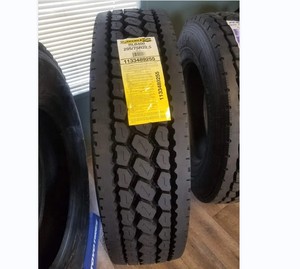



































































































































































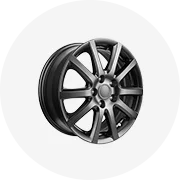
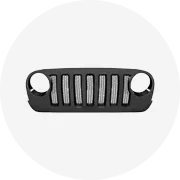
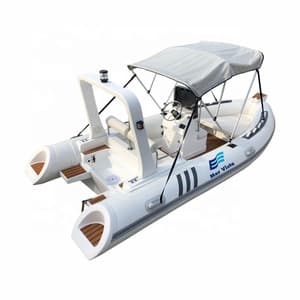
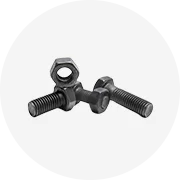
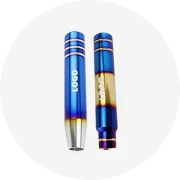
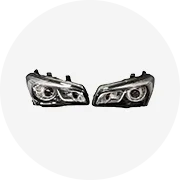
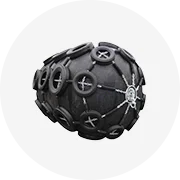
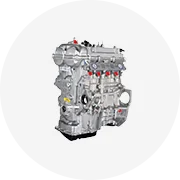
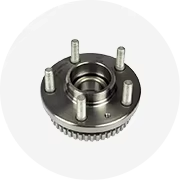
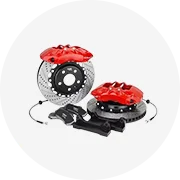
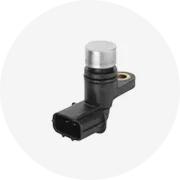



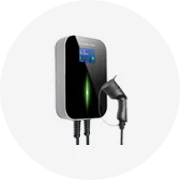
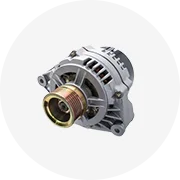






 浙公网安备 33010002000092号
浙公网安备 33010002000092号 浙B2-20120091-4
浙B2-20120091-4